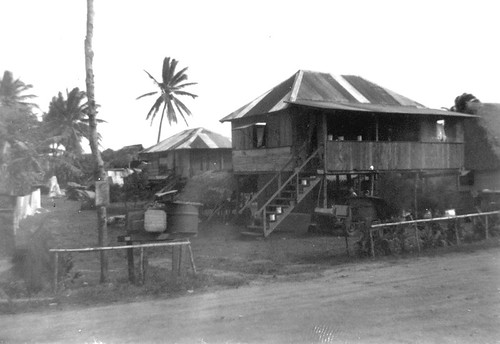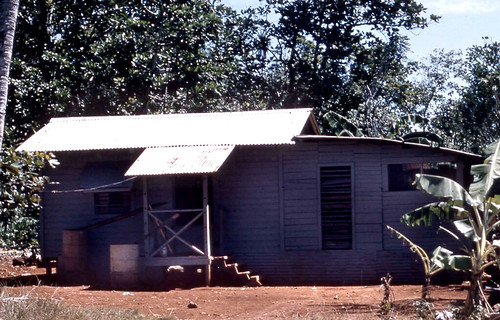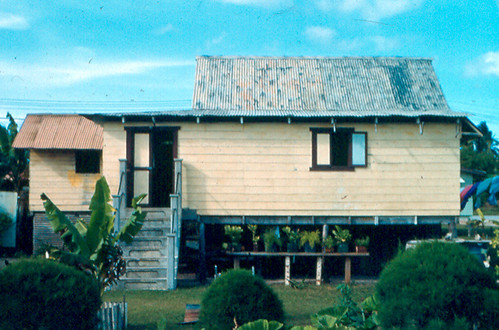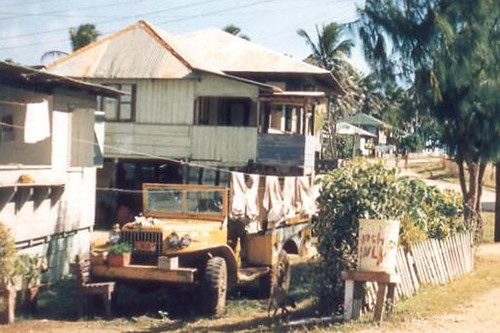Wood and Tin Houses
Dominant housing style until 1960’s
A precursor to the concrete typhoon proof pillbox style of buildings common to contemporary Guam were wood and tin homes. These simple homes were the dominant form of residential housing until the 1960s.
The ifit tree (intsia bijuga), common to tropical regions, was the primary wood used in construction. The dark purple hardwood was prized for its ability to resist dry rot and termites. Post-World War II ifit shortages, combined with increased military construction, brought wood imports from the United States and the Philippines. Redwood resin was used to acclimate the wood to the tropical environment.
Wood and tin houses first came into use on Guam following the Spanish-American War (1898). Used by the US Navy because of their durability and low cost, tin slowly replaced both the Spanish tile and traditional thatched roofs as a construction material.
Widespread destruction of wood and thatched dwellings occurred in 1944 when the US military strategy in liberating the island from the Japanese led to the bombing of any structure that might house potential threats. Only the homes in the southern villages of Humåtak, Malesso’, and Inalåhan remained intact. After securing the island, demolition and construction was conducted by the Navy Seabees to provide facilities for the 200,000 servicemen expected to be in Guam to fight on the Asian front toward the end of World War II. By the end of this period, an estimated 80 percent of the 3,286 homes on Guam were destroyed.
To house the displaced, the military built more than 1,400 new homes in just a little over a year beginning in August 1944, further spreading the use of wood and tin.
The final transition toward the concrete homes of use today was initiated in part by natural disasters. The damages meted out by Supertyphoon Karen in 1962 and Typhoon Olive in 1963 lead to the passage by Congress of the Guam Rehabilitation Act (Public Law 88-170) of 4 November 1963. New housing projects created by the Kaiser Company with the assistance of Black Construction Company used federal money to create cheap, typhoon resistant concrete houses. Wood and tin houses quickly fell out of favor.
A housing survey conducted in 2000 found that of the 47,677 housing units on Guam, less than three percent had wood foundations. Metal roofs, however, could be found on close to 13 percent of the homes on the island.
For further reading
Rogers, Robert. Destiny’s Landfall: A History of Guam. Honolulu: University of Hawai`i Press, 1995.
Sanchez, Pedro C. Uncle Sam, Please Come Back To Guam. Tamuning and Hagåtña: Pacific Island Publishing Company and Star Press, 1979.
US Department of Commerce Economics and Statistics Administration Census Bureau. Social, Economic, and Housing Characteristics. 2000 Census of Population and Housing. PHC-4-GUAM. Washington, DC: USCB, 2003.



